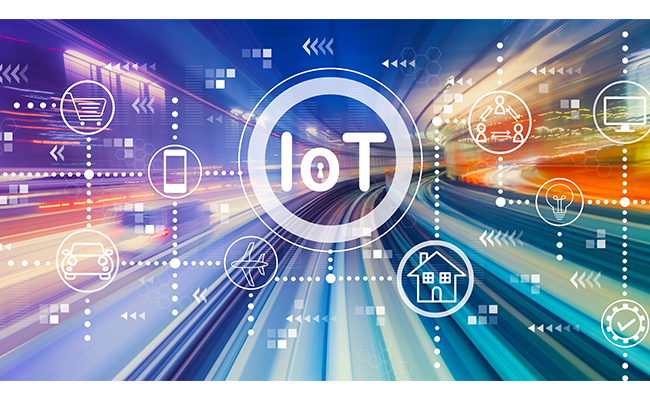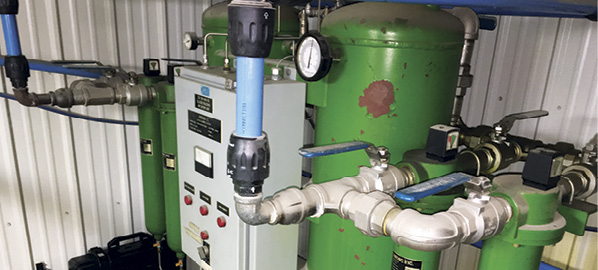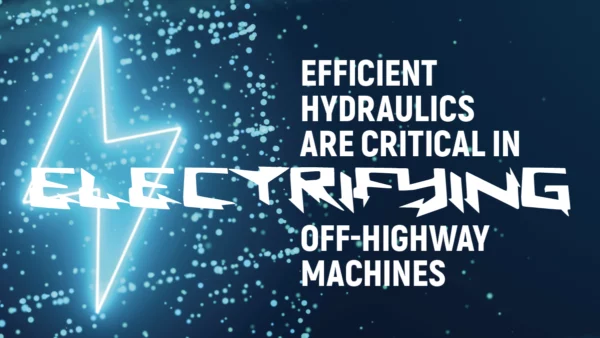3 Ways IoT Improves Component Efficiency
 By Emily Newton, Editor-in-Chief, Revolutionized.
By Emily Newton, Editor-in-Chief, Revolutionized.
Professionals who use fluid power equipment today have numerous goals, improved fluid power efficiency undoubtedly among them. Decision-makers pursue various paths within the Internet of Things. Many IoT fluid power components also connect to the cloud, allowing immediate access to data from anywhere with a compatible device.
Here are three ways IoT helps users increase efficiency in fluid power equipment.
1. IoT fluid power components improve overall safety.
An Allied Market Research report indicated the global fluid sensors market will reach $25.4 billion by 2030. If that happens, it will represent a 7.45% compound annual growth rate from 2022 to 2030. The analysts confirmed that the water and wastewater sector represents the fastest-growing segment studied. They noted that one of the reasons was that people operating hydropower plants often rely on fluid sensors for continual monitoring.
One research paper showed how the path to better fluid power efficiency might start with hydropower plant monitoring focusing on enhanced safety. The author pointed out that the problems with traditional dam-monitoring solutions include low efficiency and slow operating speeds. The writer also pointed out that the large-scale nature of the facilities and the way equipment is often scattered around hydropower plants also create challenges that restrict the success of conventional safety monitoring methods.
However, the author explained how IoT could help plant safety managers work more efficiently by providing comprehensive information in convenient ways. Decision-makers see overall cost benefits when the safety monitoring of hydraulic equipment happens more efficiently.
The author also described a case study where a facility used 15 smart sensors to collect data. The IoT fluid power components spanned buried and above-ground data-collection devices. The results from that real-world evaluation showed that you could improve fluid power efficiency with targeted and updated safety data.
The operators could detect problems faster, verify the plant’s overall safety level, and receive real-time warnings of urgent situations. This increased information helps avoid engineering accidents and ensures that the hydropower plant operates productively and safely.
2. IoT raises efficiency by preventing equipment breakdowns.
Another practical way to improve how efficiently fluid power systems work is to use smart sensors that detect abnormal conditions.
IoT connectivity can help users see where and why their current maintenance programs fall short. Equipment is more likely to experience compound failures when people don’t maintain it properly. One problem often causes another problem. Such cases can become tremendously expensive and restrict a company’s productivity.
To diagnose a problem and find its root without the advantages of smart sensors is time consuming, but IoT can show the precise location of the issue and the parts of a machine it affects. This technology is also becoming more affordable, meaning people can monitor more components or pieces of equipment while staying within budget. Some companies sell fluid power components with IoT built in, so you don’t have to add sensors after the fact, making it easier to start benefiting from it with minimal delays.
One notable advantage is catching impending failures before they happen. Such insights prevent costly equipment outages and lengthy downtime associated with finding a technician and the necessary parts on short notice.
It’s also possible to buy plug and play condition-monitoring devices for hydraulic fluid. Some of these products can prevent contaminated liquid from entering the machine, stopping one of the leading causes of downtime.
Moreover, IoT sensors can help decision-makers recognize when replacing an aging machine may be more cost-effective than continuing to fix frequent break downs. Committing to a maintenance schedule driven by IoT data boosts fluid power efficiency by ensuring upkeep only happens when necessary and never too late.
Eric Lanke, president and CEO of the National Fluid Power Association, explained, “While IoT is clearly making dramatic inroads into the marketplace, the preeminent concerns remain the needs for machines to deliver increased availability and uptime, increased productivity and performance, and lower capital and operating costs.” He noted that while the IoT can support things like autonomous operation, people should not overlook the importance of focusing on those essential needs.
Lanke discussed numerous customer drivers, which are the benefits or attributes fluid power equipment providers want to give their target audience. Many of them, such as increased weight reduction, better performance, and lower operating costs, directly relate to improved efficiency.
3. IoT promotes enhanced trend tracking.
IoT has been a game changer because it makes manufacturers and equipment operators aware of changes affecting operational efficiency. Statistics indicate the transportation and logistics industry comprises 26% of the vehicle-tracking market. Company leaders can oversee gas mileage, vehicle idle time, and the percentage of on-time deliveries associated with a particular truck or driver.
IoT solutions in the fluid power industry can monitor pumps and valves, keeping an eye on performance and other meaningful metrics. One product offers application-specific analyses for equipment, allowing operators to keep machines at peak efficiency and reliable.
Companies can invest in wired or wireless IoT systems and create a sensor network spanning thousands of assets. They can then activate trend-tracking features that provide immediate notifications. Alerts do not necessarily mean a piece of equipment will soon fail; rather, they are reminders to check whether assets need attention.
Many pieces of human-driven industrial equipment work with fluid power. Therefore, it’s useful to track trends indicating potential mishandling that could interfere with efficiency. Issues like overrunning or using the equipment in ways not intended by the manufacturer could shorten a machine’s life-span and make it operate less efficiently. Many assets used in agriculture feature fluid power components. Data indicates an eight-hour day of downtime could cost farmers $2,400 during a planting season.
Human error or carelessness are not the only factors that limit efficiency, but they’re often prominent causes. IoT sensors can document ongoing patterns of misuse, providing the data to justify coaching, training, or other corrective actions.
Before IoT technology became widely available, fluid power underwent significant advancements that caused desirable outcomes across various industries. IoT fluid power components help users capitalize on those improvements.
These three areas outlined above are just the start of what’s possible. Additional use cases will become more apparent and widespread as more people explore the best ways to apply IoT sensors and networks to fluid power applications.
Emily Newton is editor-in-chief of Revolutionized, an online magazine covering technologies advancing the industrial sector. For more information, visit https://revolutionized.com/.








IoT works well in everyday life and especially in the field of transport in my opinion. IoT devices can be installed not only in public transport such as buses and trains, but also incorporated into city infrastructure.